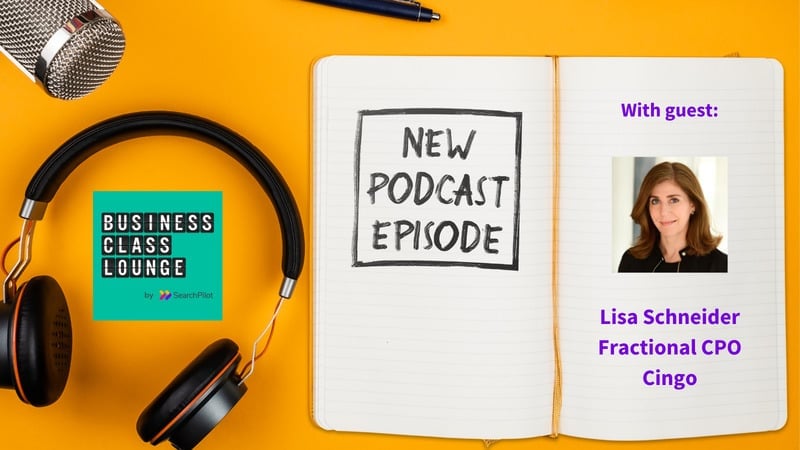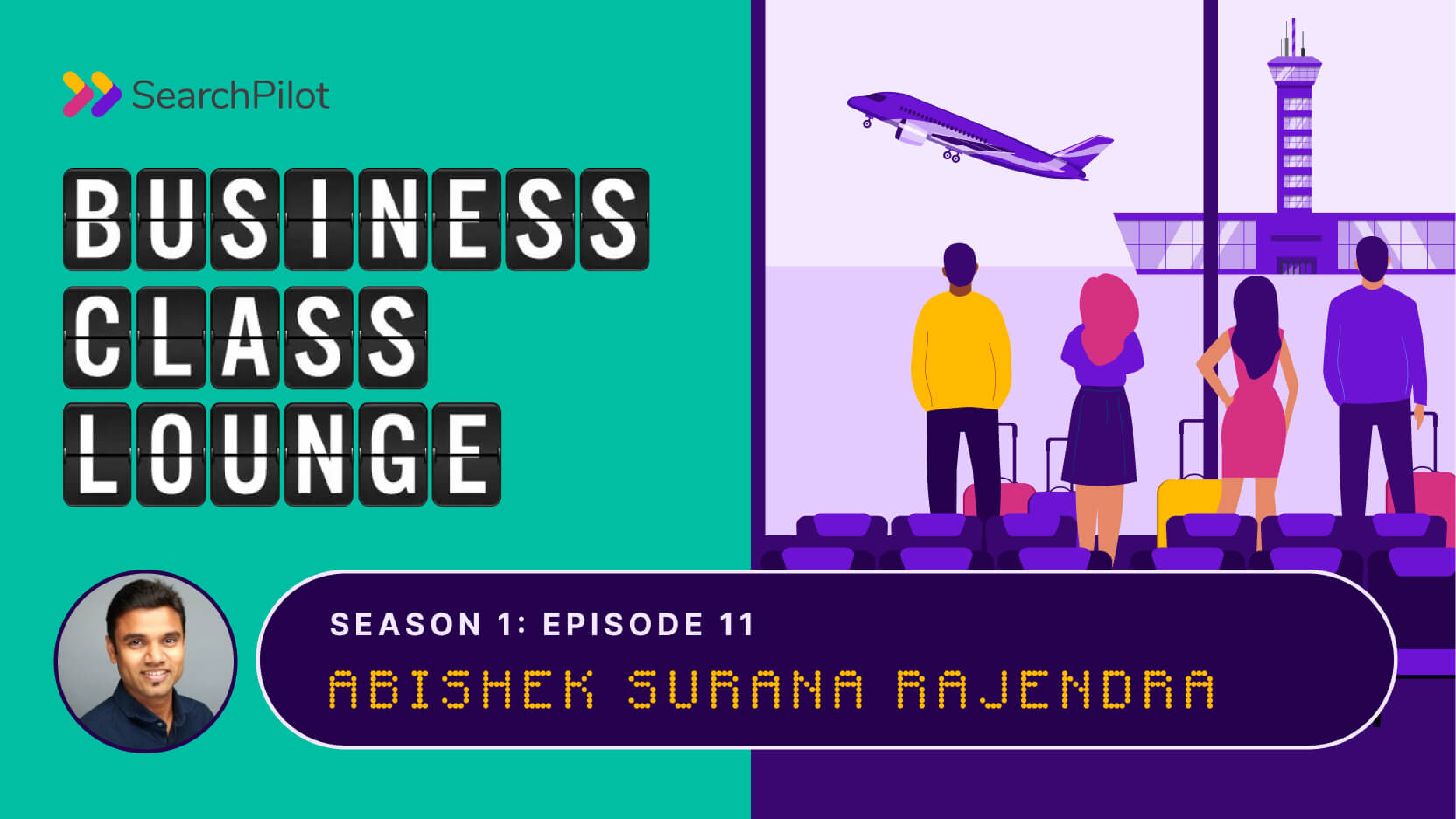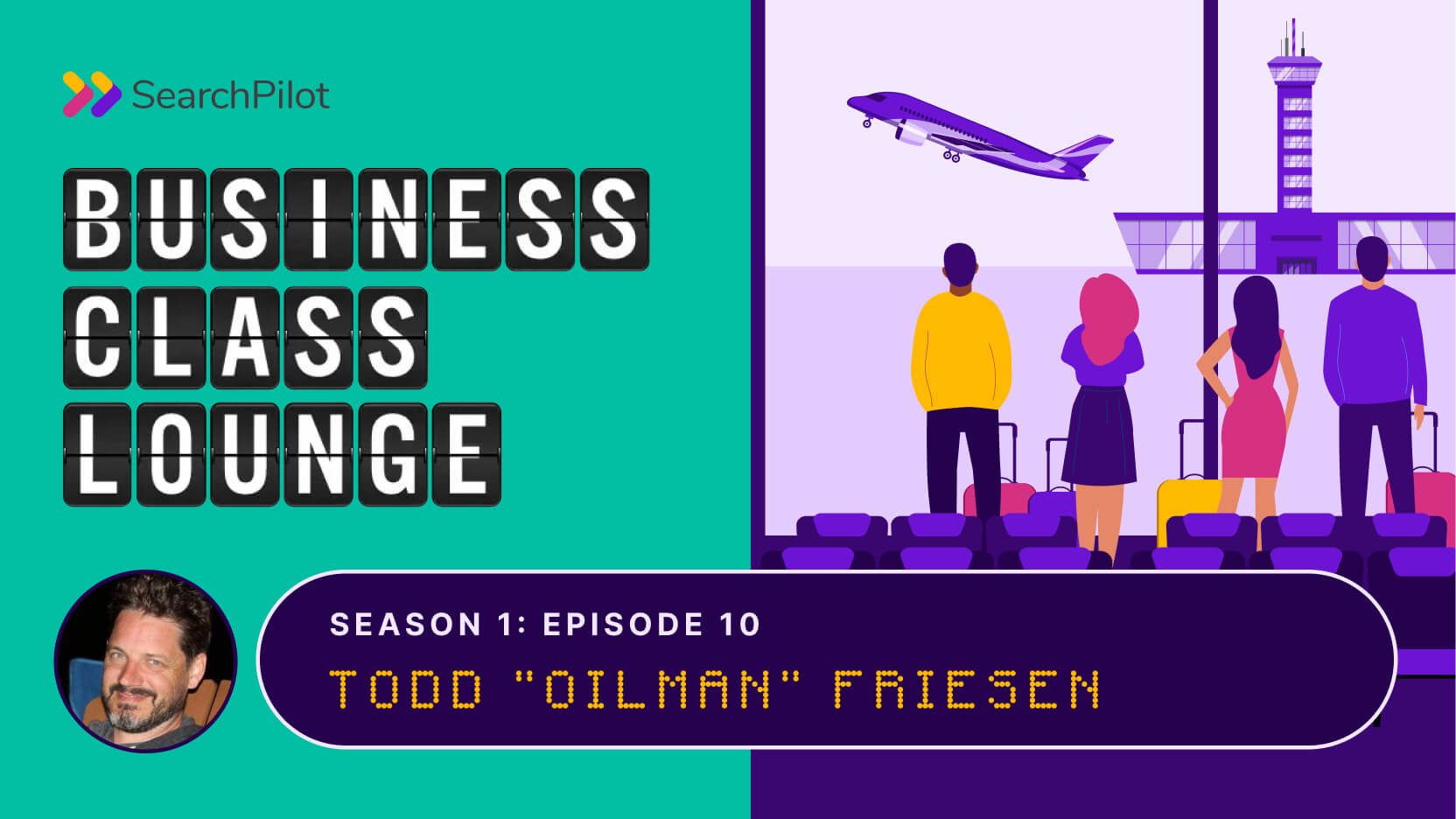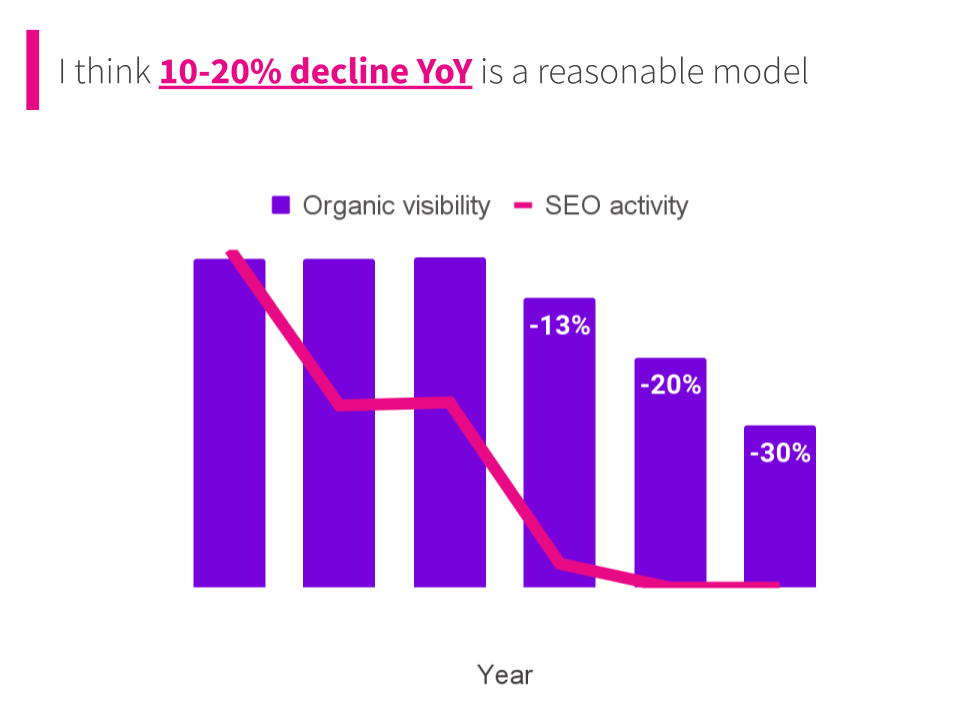In this episode of the Business Class Lounge podcast, I am joined by Lisa Schneider. Lisa and I met when she was Chief Digital Officer at Merriam Webster, and we were lucky enough to run SEO split tests together. These days, she’s a fractional chief product officer and product strategy consultant. She’s currently working on a,just out of stealth, FinTech startup called Cingo, which will bridge the gap between people’s estate plan and the actual execution, which strikes me as a really important mission.
Lisa is one of the best people I know at articulating an organization’s mission and crafting a product vision too. I also wanted to quiz her about her, in her own words, irrational love for the English language.
Below is the abridged transcript of the episode where I want to share some of our discussions on leadership, SEO, and marketing so you know what to expect from this episode. If you want to go straight to listening to the full episode now, you can catch it below or wherever you get your podcasts.
How did you work [at Merriam Webster] to connect the mission to more business goals and join the dots between the mission and the commercials?
Lisa Schneider (LS): So I wrote a two-part mission statement, and the first part was to propagate our irrational love of the English language. And irrational was because English is a hot mess, right? It doesn’t make any sense and lots of exceptions to the rules, but we love it anyway. And the second part was to help people understand and use language better so they can better understand and communicate with the world around them.
What clear missions do is they provide creative constraints in both ways.
They make it a lot easier to say yes to things that fall in the mission. So if we’re supposed to propagate our irrational love of the English language, suddenly it makes sense to go out on Twitter and geek out about language in public, definitely. It also allows you to say no. Because if something doesn’t fit in that mission, then it’s really easy to say, this sounds fun. It’s a cool idea, it’s a cool technology, but it doesn’t fall in our mission. It doesn’t accomplish either of these things so actually we’re going to deprioritize that and say no. That sort of foundational work is really important.
One of the organizations I’m working with now is a pre-launch FinTech startup called Cingo, which is super interesting. When I joined the company, they also didn’t have that foundational work. It was like, here’s a problem we’re going to solve, here’s a bunch of features and we need to get them all in. Remember this is a pre-launch MVP. We need to get them all in and we need to have content marketing and it’s like we need to do everything all at once. Here’s a bunch of avatars and our audience is potentially everybody. That is too wide. There’s no creative constraints. You can’t make decisions, you can’t prioritize. So we did go through some competitive analysis and some workshops. I have specific frameworks that I use to help tease these out.
Then you end up with, we’re trying to solve exactly this problem for exactly this person.
Now we understand this feature does that. This feature is cool and could be something in the future but we’re not doing it now. All of a sudden those conversations are easy and the answers are clear.
I’m oversimplifying a teeny bit, but relatively speaking, the conversations are easy, the answers are clear. When you sit here and talk about it, it sounds easy. But it isn’t that easy to get that foundation in place, and so many organizations skip it. That goes right to everything, so now this permeates to marketing right through to SEO. What does go to market look like? What does SEO look like? Who are you targeting? Who are you writing for? What are you optimizing for? Where do you wanna be? All of that ties back to real clarity in your mission, vision, objectives, and strategy. And if you jump from, here’s what we do to, here’s a bunch of features, how do we get them on the roadmap? You’ve missed that whole middle.
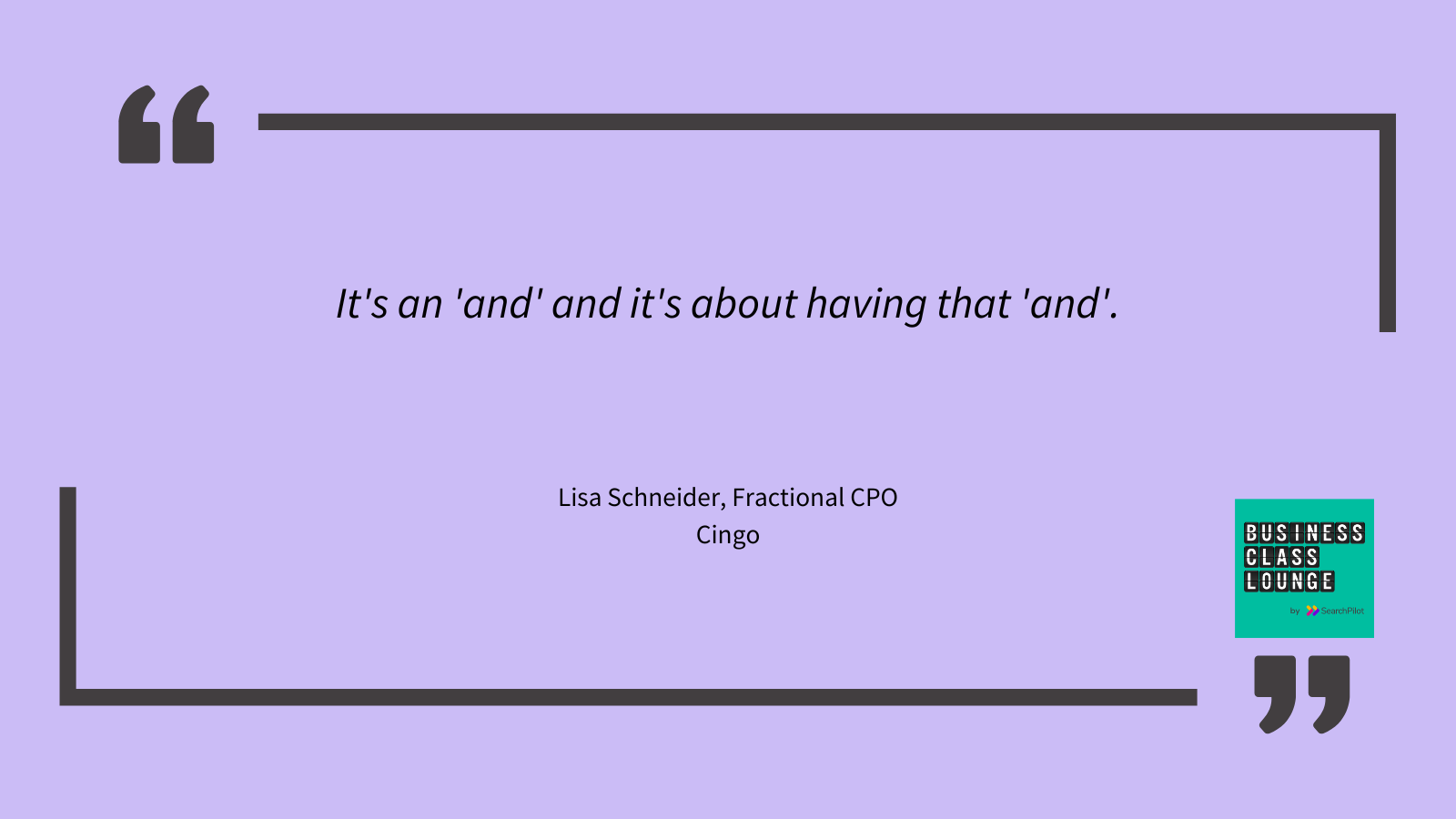
So, how do you operationalize and run the business once you’ve defined your core mission? How do you make it ring true for everyone?
LS: It’s an ‘and’, it’s about having that ‘and’. Look, ultimately the goals are commercial. That’s the reality. But the question is how? How are we getting there?
First of all, what are the indicators that will mean we know that this is working and on track for that? So really understanding the relevant metrics for you: how users use your product, how users get to your product, how users convert to pay for your product. And that’s the other piece, right? That nuance and that customization. So many people lean on this very broad theory and it’s not well applicable. The theory’s supposed to get us to this, here and now, is it getting us to that? Because if it’s not, the theory is great, but it’s not working right here. So really understanding that and then saying, “Okay, so if I’m going to get to commercial outcome X, these are the indicators that would tell me that I’m getting there”. This is how I do product or marketing or whatever it is to drive that. Is that how I would do it? Is that in line with the mission and the strategy? So it’s the ‘and’ it’s not, “I’m going to get to this number and do anything to get there.”
The other thing that happens with the commercial drive is, if you are in, for example, a B2B SaaS space, you’ll have feedback from customers or potential customers. Often what happens there is what I call stakeholder volleyball. The sales team comes in and says, “Oh, Will said he’ll buy if we have this so when can you build it?“. Boom - tossed over the net into product. The problem with that conversation is you can end up with a completely ‘Frankenstein’ product and your maintenance costs balloon. And the CFO is going to get stars in their eyes and say, “Oh, great. This client’s gonna sign for a million dollars so we have to do this. But if nobody else wants that feature, we still have to maintain it. We now have to keep it interoperable with all the other Frankenstein features that we’re doing. That really is going to get very problematic and very expensive”. And at the end of the day, by the way, customers or potential customers don’t actually know that they want that feature.
What they know is they have a problem that they want solved.
So that goes back to that collaboration. Right when you’re doing your product process is that the collaboration really has to be cross-functional. And by the way, I think clients are really happy if a product person shows up and says, “I really care about you as a customer, and I’m really interested in the problem that you’re talking about. If we talk about this problem a little more, tell me exactly what is going on. What are you looking for? What are the blocks? What are your frustrations? What’s working elsewhere? How are you doing this?” And then it’s up to the product team to a - think about what is actually the right solution for that problem, and b - to actually have many of those conversations find the through line and say, “Here is a feature that will solve a shared problem among a lot of customers and potential customers.”
“Now it’s worth building this feature, and that ties back to the mission and objective, that will drive the commercial outcome.”
What technical skills have you found most useful to develop? Was there anything that helped push your career forward and move to the executive level?
LS: Yeah, a hundred percent I would say there are.
So one is data literacy. It’s really important to be able to look at and understand data, to understand what data matters, right? Because you can go down the rabbit hole, you can measure everything. That’s not helpful if you are not getting actionable insights out of that measurement. So really understanding data and ultimately the skill is being able to tease stories out of data. Here’s a data point here, they’re not standing alone. So are you able to, again, I’ve used this word before, but find the through line? What is the story that comes out of looking at a lot of data or different data points, understanding what’s important, what’s not important, and what is it telling you as a story?
I was an English major. And I think finding themes and patterns in stories feels to me very adjacent to finding stories in data. And that is a really critical skill because you are right, the data-driven decision making is foundational. It is the thing that’s gonna get you to those commercial outcomes.
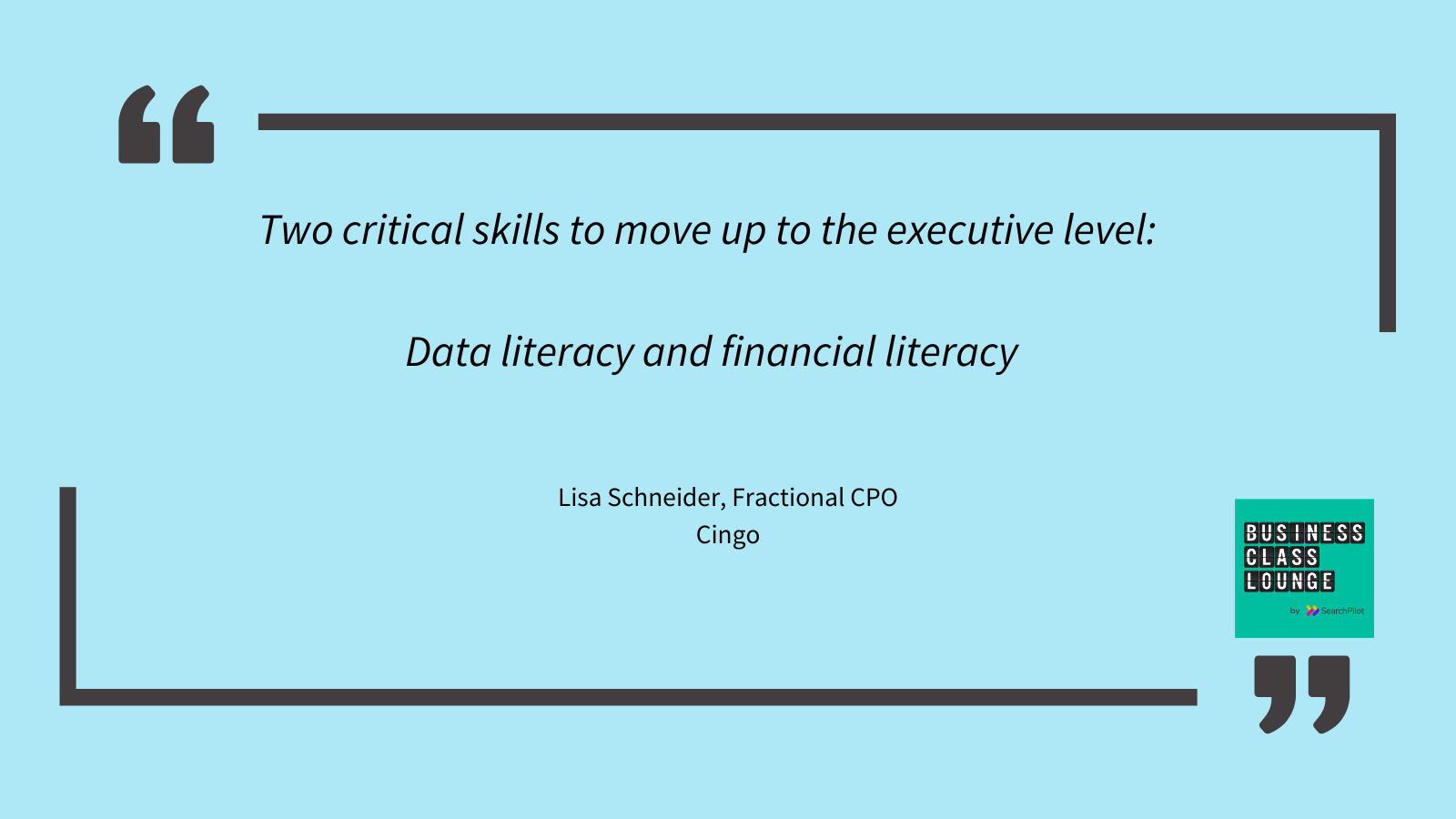
The other is what you mentioned is financial literacy if you want to move up. I love the idea of having independent contributor paths for any function, people who are just really good at that function. They don’t necessarily want to be in management, but if you do want to be in management, to be working at the strategic level, reporting to a CEO, presenting in front of boards, a hundred percent you have to have strong financial skills.
And I say a lot of the time as a CPO, your new best friend should be the CFO.
SEO is quite a challenging channel. How have you found SEO reporting and SEO accountability to work best?
LS: First of all, I’m gonna agree that it is really hard to report up because it is a really wonky channel.
It is a marathon, not a sprint.
The rules change all the time. Listen, there are always factors outside of our control. But I feel in SEO there are many factors outside of your control that are unpredictable and it can change something immediately, and so all of that combined makes it very difficult, right?
What the board wants to know is what are you going to do? When are you going to get it? What are the results going to be? And then did you get those results at the time that you said you would get them? And SEO doesn’t really fit those model discussions really well at all. And so what I found to be most effective is not to try to get too much into the weeds and often to, sandbag a little bit like - You have a hypothesis and it might or might not be true in ways that are less predictable than other hypotheses that you have. Sometimes going back and saying, “Oh, we did a thing and here are the results.” is a lot better than saying, “We’re going to do a thing and we think these will be the results.”.
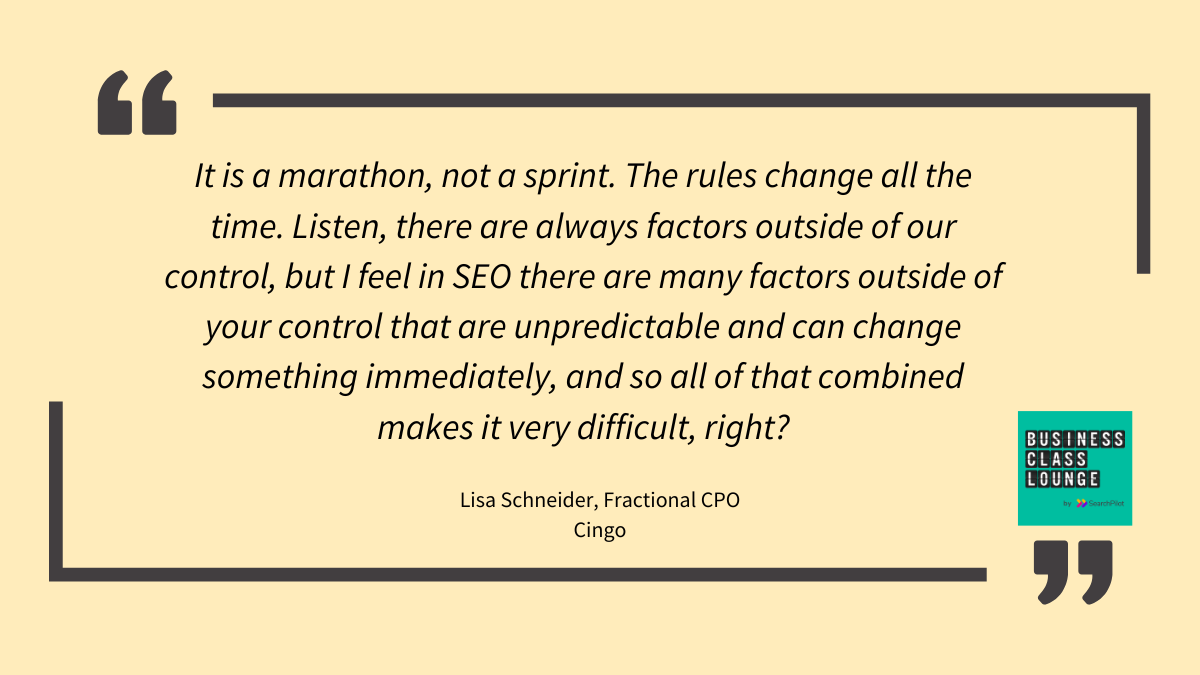
Your ability to do that depends in many ways on how much you’re spending. You can’t do that if you have to spend a lot of money on a project or invest in teams to make that happen. So it depends on that. It also depends, and this goes back to that tie-in to the ‘and’, where we started with the strategy and the commercial outcomes. Can you get that twofer? I’m going to do this thing that will be really good for users. And we think, (this is an oversimplification) just do what’s good for users and you’ll be fine. It’s completely not true. But if separately, you think this could be really good for users and it will help with SEO then you can maybe focus on the user benefit side of it as a project, be a little cagier or broader about the range of SEO outcome.
We know that users like this. This is going to be part of a user-centered redesign of the definition pages that ask users what’s most important to them, put those things at the top of the page, expand them. And this will help with engagement and referrals and that sort of thing. We think it’ll help SEO and here’s a range. So it wasn’t a pure SEO play and we were able to get approval for that project to make that higher and to do that project and it really performed at the top of what we had hoped. There definitely was a lot of sort of surround sound and bringing in other pieces of what effect this would have and how it would be useful to us in order to get that funded. It’s really hard, if you ask a board for money for something, for an SEO project and say it’s going to be X, you really have to wean them off these short-term results.
And you really have to just hammer home that this is a long-term play.
That you have a hypothesis if you do these couple of things between them or one of them will get you to here, but it might take 12 to 18 months by the time Google gets around to recognizing it and doing another update that is going to impact the type of thing that you are working on. And it’s really hard.
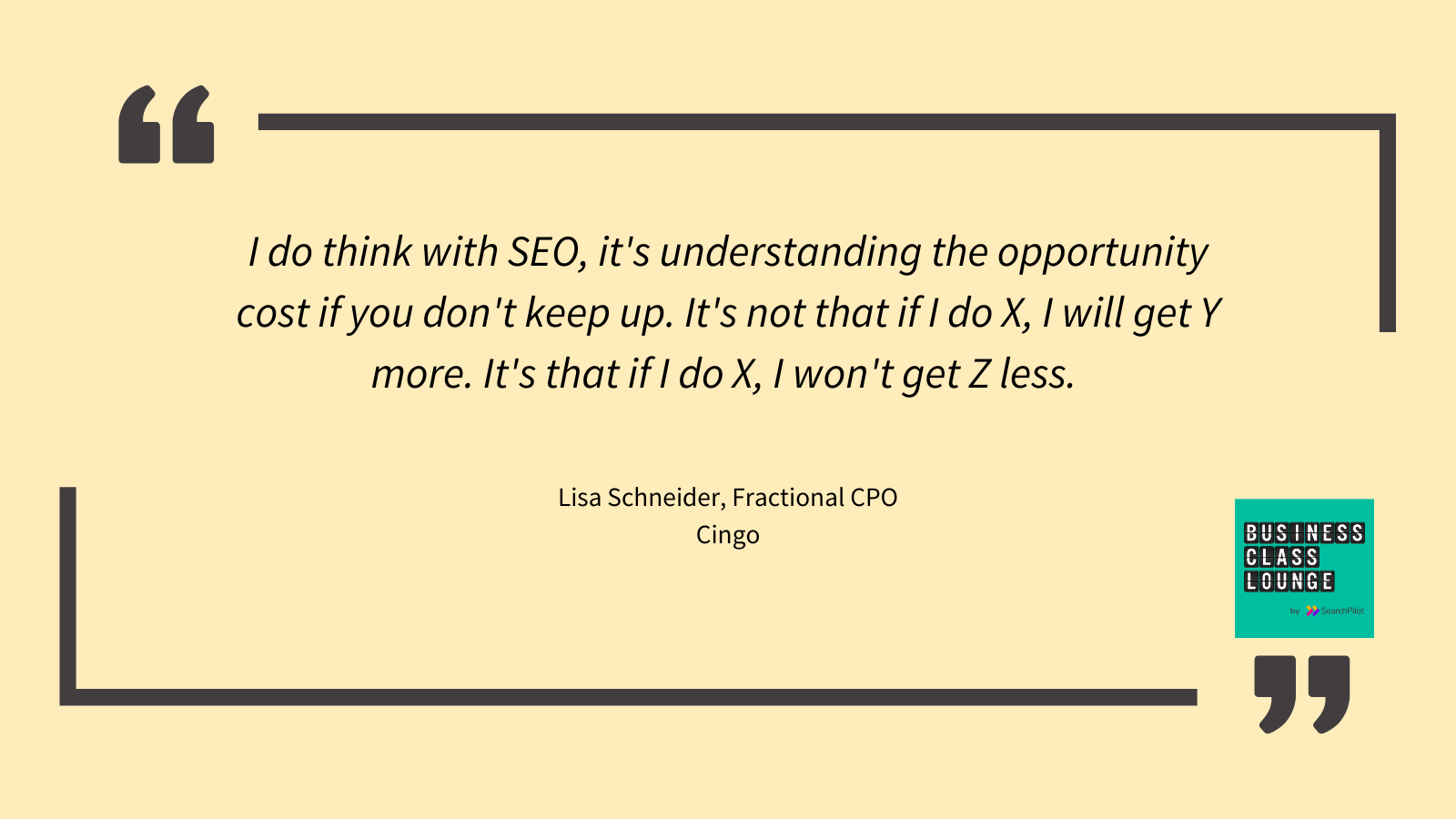
WC: On the flip side, it can be an investment. So thinking about SEO as an investment rather than as an expense is an angle that I’ve been hearing about from a few smart teams recently, and potentially even accounting for it.
LS: That’s right. Opportunity cost. I do think with SEO, understanding the opportunity cost if you don’t keep up.
It’s not that if I do X, I will get Y more. It’s that if I do X, I won’t get Z less.
How do you evaluate a pitch when somebody comes to you for budget sign off?
LS: It is the ‘and’ for sure, this comes from that learning about finance. If I’m approving budget, it’s not just - “Oh, this sounds really interesting or fun to do.”, or “I like you”, or “I trust you”. It’s really, if I were pitching upward, what would I be asked? I’m going to ask those same questions.
Is this data-based? What is this based on? Do I agree with your analysis of the data? Do you have reasonable expectations? What are they based on? Do you have a spread? One of the activities I like to do is the sort of high, medium, low. Because everyone could get up to whatever.
Okay. What if things don’t go so well? I’m not talking about you could always get zero, but if things don’t go so well, what is your spread? Are we comfortable at the low end of this spread? The high end is gravy because otherwise it’s the opposite of sandbag. You’re always going after the high end and you don’t always reach it, and then that can really depreciate confidence.
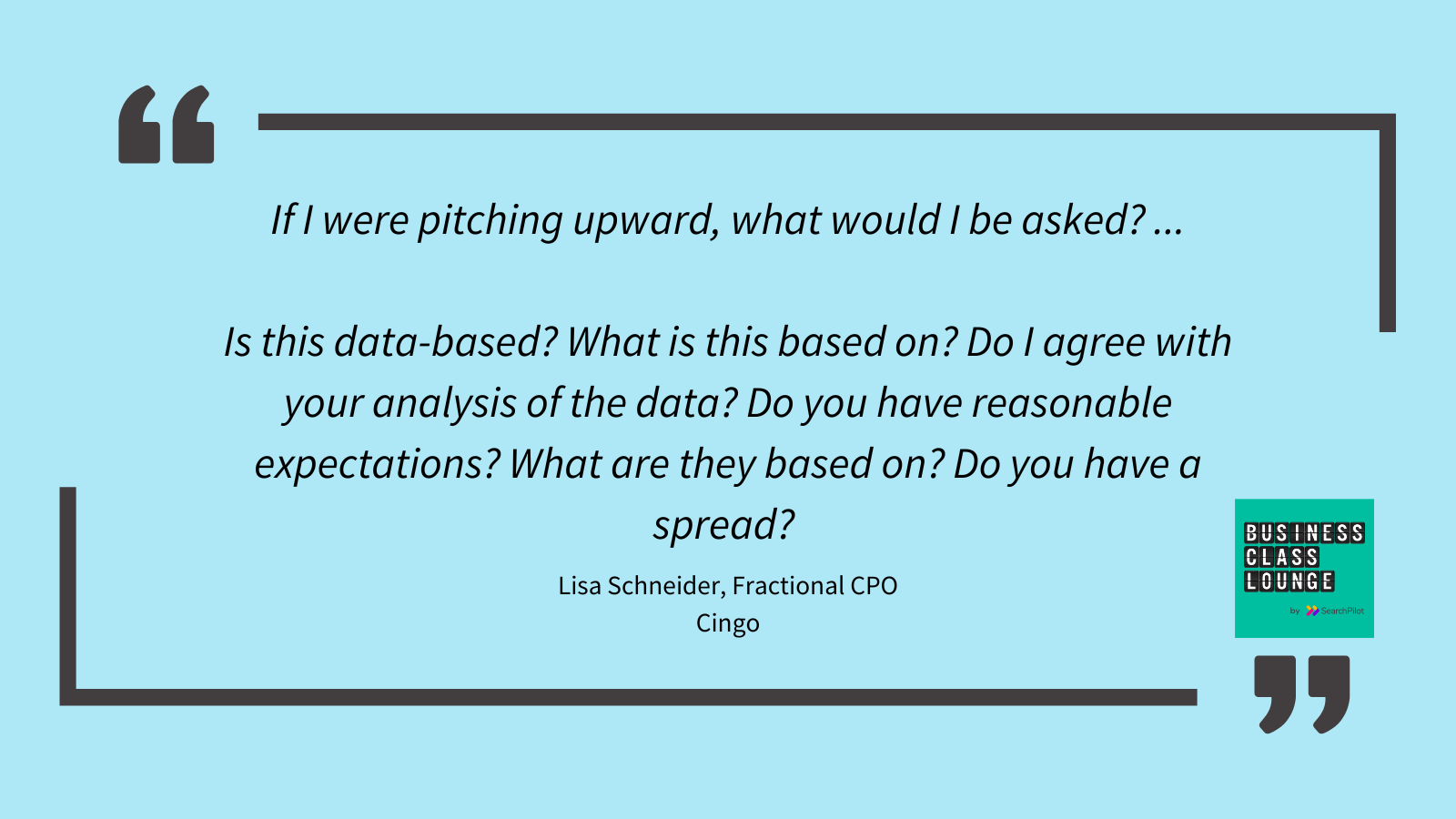
So ultimately, even if I have this in my budget already, and it’s just a matter of what I’m spending it on and I’m approving it, I need to be prepared to defend my decision and explain my decision to a CEO, a CFO, or a board that we’ve chosen to work on these projects to meet this goal, here’s the backup.
It’s a great opportunity too, to train and give exposure to the people who are reporting into you, who are coming to you with these project ideas, to train them to do that so that they’re prepared as they get ready to step up into the role. Whether you’re leaving or they’re leaving to go elsewhere. You’re always looking to help people step up in their learnings, and it’s an opportunity to do that.
Further links
There are more great discussions like this, so head over to wherever you get your podcasts Apple, Spotify, Amazon, YouTube or you can catch the full episode directly from the feed here.
I’d love to hear your thoughts from this first episode, email me at podcast@searchpilot.com or send me a message on LinkedIn. You can also find Lisa on LinkedIn and check out the incredible work she has started with the founders at Cingo, the FinTech startup that is focused on making estate execution seamless in one platform.
